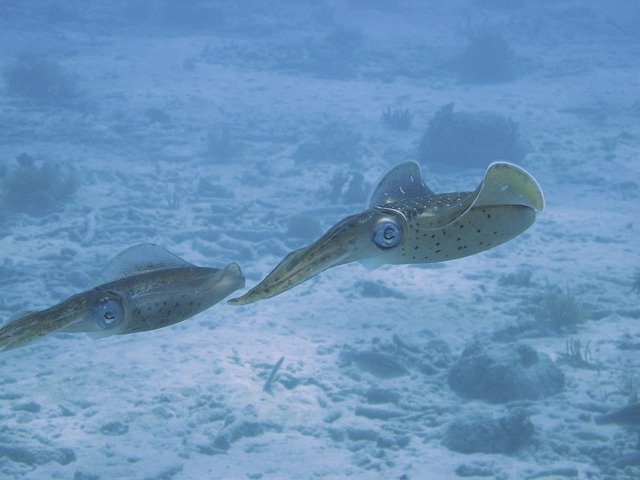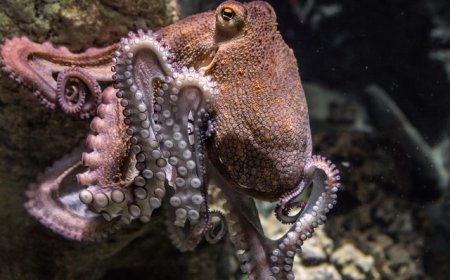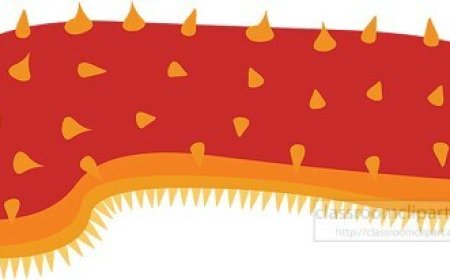All About Giant Squid for Students: Deep Sea Mysteries with Massive Eyes
Dive into the mysterious world of giant squid in this student-friendly article! Learn about their deep-sea habitat, huge eyes, powerful tentacles, and legendary myths. Includes quiz, vocabulary, and a kid-friendly summary.

🦑 Giant Squid: Deep Sea Mysteries with Massive Eyes
The Giant Squid is one of the most mysterious animals in the ocean. Living far beneath the surface in the darkest parts of the sea, this deep-sea invertebrate has long arms, a sharp beak, and eyes the size of basketballs.
Its size, power, and mystery inspired stories of sea monsters, including the legendary Kraken. But the real giant squid is not a monster—it’s a rare and fascinating creature that scientists are still learning about.
🌍 Habitat and Range
Giant squid live in the deep ocean, usually at depths of 1,000 to 3,000 feet (300 to 900 meters). They are found in:
- The Atlantic Ocean
- The Pacific Ocean
- The Indian Ocean
- Around Japan, New Zealand, and deep-sea trenches
Because they live in such deep water, they are rarely seen alive, and much of what we know comes from:
- Dead squid washed ashore
- Parts found in the stomachs of whales
- Rare deep-sea camera footage
📏 Size and Appearance
Giant squid are among the largest invertebrates in the world. Adult females are larger than males, and some can grow:
- Up to 40–45 feet (12–14 meters) long from tip to tentacle
- Weigh over 600 pounds (270 kg)
Key features:
- Eight arms and two long feeding tentacles with suckers lined with sharp hooks
- A sharp beak for tearing prey
- A mantle (main body) shaped like a torpedo
- Giant eyes—up to 10 inches wide, the largest eyes of any animal
- A jet propulsion system using a siphon to move quickly
Their huge eyes help them see in the pitch-black deep sea, where little light reaches.
🐟 Diet and Hunting Behavior
Giant squid are carnivores and ambush predators. They use their two long tentacles to:
- Grab prey like fish, deep-sea squid, and crustaceans
- Pull the prey toward their arms, which hold it tightly with suckers
- Tear it apart with their beak and radula (a tongue-like organ with rows of teeth)
They have no bones, so they can move silently and swiftly, making them well-suited for surprise attacks.
🧠 Behavior and Mystery
Because giant squid live so deep, we still have many unanswered questions. Scientists believe they:
- Are solitary hunters
- May have good intelligence, like their relatives the octopus
- Can move quickly by jetting water through their siphon
- May use ink for defense, although it’s unclear in deep water
Some rare footage shows giant squid attacking baited cameras, revealing just how fast and strong they can be.
🦕 Legends and Sea Monster Myths
For hundreds of years, sailors told stories of huge sea monsters with giant arms dragging ships under the water. These stories were inspired by:
- Giant squid sightings
- Dead squid washing ashore
- Unexplained sea events
One famous sea monster was the Kraken, described in Viking legends as a squid-like beast as big as an island!
Today we know the truth: giant squid are real, but they are not dangerous to humans, and they prefer to avoid contact.
🍼 Life Cycle and Reproduction
Very little is known about giant squid reproduction, but scientists believe:
- Females lay thousands of eggs
- The eggs float in the deep sea until hatching
- Juvenile squid grow quickly and live mostly alone
The lifespan of a giant squid is estimated to be less than 5 years. Because they grow so fast and die young, finding and studying young squid is difficult.
⚠️ Threats and Conservation
Giant squid are not currently listed as endangered, but they face several challenges:
- Bycatch in deep-sea fishing operations
- Climate change, which affects ocean currents and temperature
- Pollution, including plastics and chemicals reaching deep waters
- Lack of knowledge—we don’t know enough to protect them fully
Conservation efforts include:
- Deep-sea research and monitoring
- Sustainable fishing practices
- International cooperation to protect ocean habitats
- Public awareness through documentaries and marine science education
🎉 Fun Facts About Giant Squid
- Their eyes are the biggest of any animal—perfect for spotting predators in the dark.
- They battle sperm whales, which often bear squid sucker scars.
- A squid’s beak is so sharp it can cut through bone.
- The largest recorded squid was over 43 feet long.
- They have three hearts and blue blood.
🧠 Vocabulary List
- Invertebrate – An animal without a backbone
- Cephalopod – A group of ocean animals that includes squid and octopuses
- Tentacle – A long, flexible limb used for catching prey
- Beak – A hard, sharp mouthpart used to cut food
- Radula – A toothed, ribbon-like tongue used for feeding
- Mantle – The main body of a squid
- Siphon – A tube-like organ used to move by jet propulsion
- Deep sea – The very deep parts of the ocean with little or no light
- Ambush predator – An animal that hides and surprises its prey
- Myth – A traditional story that explains natural events or unknown creatures
✅ Giant Squid Quiz: Deep-Sea Detective
- How many arms and tentacles does a giant squid have?
A. 8 arms and 2 tentacles B. 6 arms and 4 legs C. 10 arms only D. 12 legs
Answer: A. 8 arms and 2 tentacles - What is the squid’s beak used for?
A. Singing B. Swimming C. Cutting and eating food D. Breathing
Answer: C. Cutting and eating food - Where do giant squid live?
A. Coral reefs B. Freshwater rivers C. Deep sea D. Icebergs
Answer: C. Deep sea - What helps giant squid see in the dark?
A. Flashlights B. Big eyes C. Antennae D. Night-vision goggles
Answer: B. Big eyes - What sea monster was based on giant squid myths?
A. Mermaid B. Sea turtle C. Kraken D. Jellyfish
Answer: C. Kraken
🧒 Kid-Friendly Summary
Giant squid are real deep-sea giants with huge eyes, long arms, and powerful tentacles. They live far below the surface and are rarely seen alive. People once thought they were sea monsters, but we now know they are just shy, awesome ocean creatures.
Scientists are still learning about them, but one thing is clear: the giant squid is one of the coolest and most mysterious animals in the sea!



















































